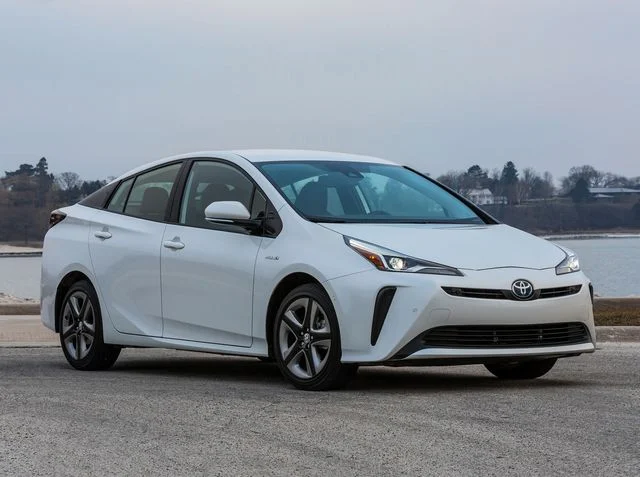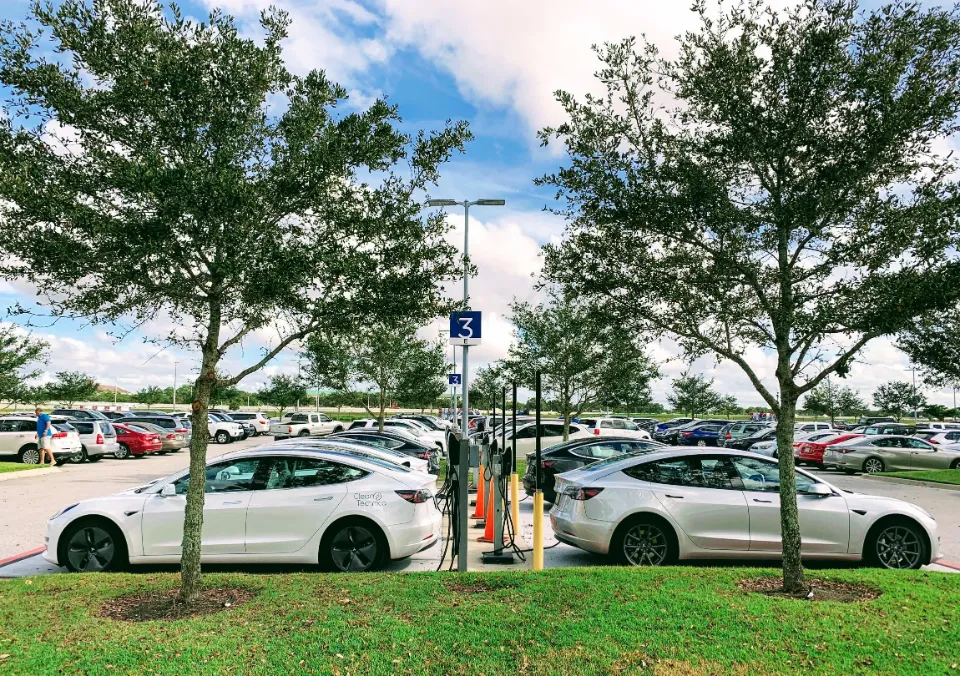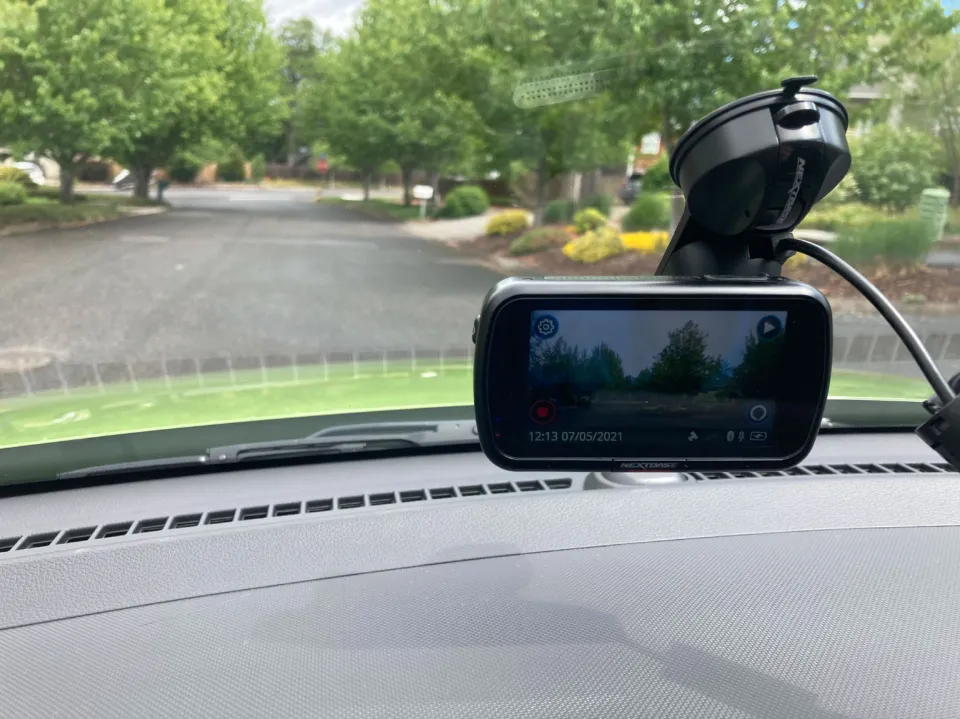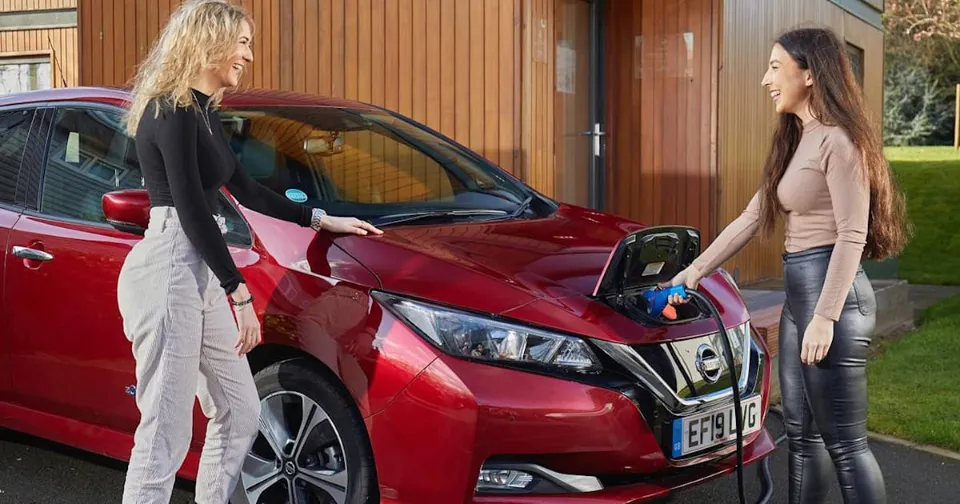A hybrid car runs on both gas and electricity. The face of environmentally friendly driving options has been drastically altered by this technology. Read on to find out more about Hybrid Car Batteries.
The improved fuel economy that has emerged as the technology’s key selling point is made possible by the batteries in hybrid vehicles. They fuel the electric motor, which propels a hybrid vehicle usually at a slower speed. This lessens the strain on the gasoline engine and prolongs the amount of fuel a vehicle uses between fill-ups.
For all-electric, plug-in hybrid, and hybrid electric vehicles (HEVs), energy storage systems, typically batteries, are necessary.
A hybrid vehicle combines the functions of an electric hybrid battery and a gas-powered motor. The power it produces is sufficient to move a heavy vehicle, and it is rechargeable.
Basic Things to Know About Hybrid Batteries
Although hybrid cars have advanced, they are still lacking in accessibility and affordability. In comparison to vehicles powered by internal combustion engines, hybrid vehicles are the best option. Using a combination of electric and gasoline engines, hybrid vehicles fill the gap.
Here is a quick look at Hybrid Vs Gas Car. A gas-powered car only has a traditional gas engine, while a hybrid vehicle also has an electric motor. Since hybrid vehicles can switch between their gas and electric motors while being driven, they typically have higher fuel efficiency than their gasoline-powered counterparts.
Although many consumers are unaware of how these engines function and what makes them so great for the environment, hybrid vehicles come with obvious benefits like stylish electronic gauges and exceptional fuel economy.
Electric-only motors can produce their most power when accelerating from a stop and do so efficiently. Unfortunately, in order to travel far distances, these batteries must be large and expensive. Only 70 to 250 miles is the maximum distance that battery-only cars can travel. (Are hybrid cars good for long distance driving? How far a typical hybrid can travel will be covered in this blog.)
Electric engines are significantly more useful when coupled with a gas motor. A small, incredibly efficient gas motor can be added by automakers to supplement the electric counterpart’s power. It is feasible to use a smaller, more cost-effective electric motor if an internal combustion engine can provide backup power. The most effective and reliable systems are these two when used together.
The disadvantage of this setup is that the dual motors keep the overall design pricey. Even though each motor is smaller on its own, combining both makes the car heavier and takes up a lot of room.
Editor’s Advice: How Much Does a Hybrid Battery Cost? Compared to conventional gasoline-only vehicles, hybrids use different batteries, and their prices range from $1,000 to $8,000. The final cost you’ll incur is determined by the make and model of your car as well as whether you choose a new or refurbished battery.

How Hybrid Batteries Work
Hybrid cars combine traditional car technology with that of electric cars. A hybrid car uses gasoline and a 12-volt lead-acid battery like a standard car while also drawing power from an electric battery. The driver is not even aware of the transition because the vehicle can switch between power sources seamlessly.
Regenerative braking is a technique for recharging an electric battery. The electric battery is recharged by the energy generated when the driver applies the brakes. A hybrid car’s outstanding energy efficiency is due to its ability to switch between electric and gas power. Hybrid vehicles are 20 to 35 percent more fuel-efficient than conventional vehicles because they use gas only occasionally. Additionally, by lowering emissions, a hybrid car is less harmful to the environment.
The short lifespan of a hybrid battery is one of its flaws. Most hybrid batteries have an eight-year or 100,000-mile warranty, according to Bumblebee Batteries, but some fail before that time. In order for a hybrid vehicle to operate, the hybrid battery must be present. As a result, owners must occasionally make costly investments in new hybrid batteries.
Thankfully, hybrid technology is constantly developing. Compared to older batteries, modern batteries are more durable. More options are available to drivers when it comes time to replace a battery thanks to the entry of third-party manufacturers. These aftermarket hybrid batteries are frequently less expensive than those that come from a dealer.
Hybrid batteries feature two electrodes sitting in an electrolyte solution, HybridGeek explains. As Hybrid Cars elaborates, these electrodes are separated by a polymer film that prevents short-circuiting. When the device, in this case, a hybrid car, is turned on, the electrodes are bridged. It’s important to remember that the battery in a hybrid car is actually a battery pack made up of several cells that work together to produce the significant charge required to power the car.
There are positive and negative electrodes in each battery cell. Ions from the positively charged electrode move in the direction of the negatively charged electrode. The positive ions there accept the released electrons from the negative electrode. An electrical charge is produced by this intricate process.
The hybrid vehicle’s electric range is determined by the energy it produces in its battery. The battery’s available power at any given time determines the vehicle’s acceleration.
Suggested reading: Thankfully, the market for used hybrids is rich enough for us to pick and choose those with the highest safety and reliability ratings, plus low overall cost of ownership. The best used hybrid cars are those listed here.
The Construction of High-Voltage Hybrid Battery Packs
Any battery pack is simply a collection of low-voltage battery cells that have been connected in series to create a stronger and larger battery. All hybrid battery packs follow the same general pattern, which we will discuss below using a typical Toyota hybrid battery pack as an example, despite some specific details regarding the design construction and chemistry used in individual battery cells varying between different manufacturers and/or models.
The battery packs in Prius models typically have 128* cells, with a nominal voltage of 1.2 volts for each cell. In order to create a battery module with a nominal voltage of 7.2 volts, six battery cells are connected in series, which means that one cell’s negative pole is connected to the next cell’s positive pole in the series. The modules are also linked in series to create a battery pack with a nominal voltage of 201.6 volts, continuing this pattern.
*Be aware that some hybrid battery packs in some Prius models may contain as many as 228 cells when using certain battery chemistries, such as those based on nickel-metal hydride alloys.
When the battery pack in a Prius model is 50% discharged, it can typically produce up to 20 kW of power. However, the battery’s electronic management system will keep the battery’s state of charge within a range of approximately 90% of its maximum capacity at the upper limit and approximately 30% of its capacity at the lower limit throughout normal vehicle operation.
The technical specifics of how the battery pack maintains this level of charge (also known as the battery’s SOC, or State of Charge) are outside the scope of this article, but suffice it to say that the majority of the battery charging process takes place during regenerative braking. When the driver releases pressure from the accelerator pedal, this process starts. This causes the motor/generator in the drivetrain to stop providing the vehicle with motive power and switch over to operating as a generator to restore lost battery capacity. The magnetic forces that the charging process creates are powerful enough to exert a strong braking force on the vehicle, hence the term “regenerative braking.”
Editor’s tip: Just like with all cars, your Prius’ battery will eventually need to be replaced. But when will that be? How long do Toyota Prius batteries last?

How and Why Hybrid Battery Packs Fail
The battery’s SOC (State of Charge) and SOH (State of Health) are, from the viewpoint of a typical hybrid vehicle owner, the two most crucial factors that determine the longevity, durability, and performance of a hybrid battery pack. However, what do these terms actually mean?
State of Charge
The state of charge of a battery, which in the case of a typical Prius model is 201.6 volts, is just a measurement of how much electrical energy is present in the battery in relation to its nominal voltage. Be aware that there isn’t always a linear connection between a battery’s measured voltage and its capacity to perform useful work. Simply put, a battery that is, let’s say, 70% discharged, may still be able to deliver up to 40% (or more, depending on the operating environment and the level of power demand) of the power it would if it were charged to 100% of its maximum capacity.
State of Health
While a hybrid battery’s SOC is of some importance in terms of how well a battery performs over the short term, a battery’s State of Health is vastly more important for how well (or otherwise) a hybrid battery pack performs over the medium to long-term and here’s why:
Electrical energy will always move from a high potential to a low (or lower) potential in any electrical system. Essentially, this means that if two batteries are connected and one battery loses power for any reason, electrical energy will flow from the battery with the highest charge to the battery with the lowest charge in an effort to satisfy several laws of physics, which we won’t go into here.
Therefore, in real-world scenarios, a hybrid battery pack can only function as intended if all of the cells and modules within it share equally the charging and discharging loads. However, because hybrid battery packs are made up of numerous individual cells, any failure, flaw, or malfunction in any one of them will immediately and directly affect the performance of the cells on either side of it.
As a result, a special battery control module keeps an eye on each cell and module in the battery pack separately to safeguard the power electronics and other control systems on the car. Consider a scenario in which this control module discovers a cell or module whose nominal voltage, resistance, temperature, or other monitored parameter differs from all other cells or modules by a difference greater than the maximum permitted margin. In that case, as a safety precaution, it will restrict the charging/discharging capacity of the entire battery pack to that of the damaged cell or module.
Any specific cell or module could malfunction for a variety of different reasons. In practice, though, the most common causes include:
- Manufacturing defects in battery cells
- Manufacturing differences between cells
- Poor electrical connections between cells and/or modules
- Abnormally high or low battery temperatures
- Mechanical damage to the battery during routine servicing
- And to a lesser degree, improper serving procedures
The effects of such differences can range from slight to barely perceptible to dramatic, in the sense that one or more control modules could immobilize the vehicle as a safety measure, regardless of the actual causes of differences in monitored parameters.
Related: How Long Do Hybrid Car Batteries Last? About 100,000 miles should be covered by the majority of hybrid batteries. Some owners are able to increase this number to 200,000 with excellent maintenance.
What You Can Do to Protect Your Hybrid Vehicle’s Battery Pack
Hybrid battery packs are not user serviceable because they are inherently dangerous to work on. However, there is one crucial thing you can do to safeguard your car’s battery without having to perform any maintenance on it.
Don’t Ignore Warning Lights
If any one or more of a wide range of potential problems, flaws, malfunctions, or failures in the high-voltage battery pack and its associated systems are discovered, the battery monitoring system sets trouble codes and turns on warning lights on the dashboard of the vehicle. These kinds of issues typically include:
- Be mindful that the battery’s temperature has an immediate impact on a number of its performance factors. Abnormal battery temperatures brought on by malfunctions or problems with the dedicated computer-controlled battery cooling system.
- Imbalances between battery cells and/or battery modules: Keep in mind that the performance of the entire battery pack can be adversely affected by the failure of just one battery cell, which can have the additional effect of increasing the fuel consumption of the vehicle.
- Unusual high or low rates of charge: There are a number of potential causes for these kinds of problems, though they may not always be directly linked to malfunctions, flaws, or failures in the high-voltage battery pack itself. Sometimes it’s a failure or issue with a different system, such as the battery monitoring system, power electronics, or systems that monitor and/or control the motor/generator assembly.
Types of Energy Storage Systems
All-electric vehicles, PHEVs, and HEVs use the following energy storage technologies.
Lithium-Ion Batteries
Due to their high energy per mass compared to other electrical energy storage systems, lithium-ion batteries are currently used in the majority of portable consumer electronics, such as cell phones and laptops. Additionally, they exhibit excellent high-temperature performance, a high power-to-weight ratio, high energy efficiency, and low self-discharge. The majority of lithium-ion battery parts can be recycled, but the cost of material recovery continues to be a problem for the sector. The U.S. Department of Energy is also supporting the Lithium-Ion Battery Recycling Prize to develop and demonstrate profitable solutions for collecting, sorting, storing, and transporting spent and discarded lithium-ion batteries for eventual recycling and materials recovery. Most of today’s all-electric vehicles and PHEVs use lithium-ion batteries, though the exact chemistry often varies from that of consumer electronics batteries. Research and development are ongoing to reduce their relatively high cost, extend their useful life, and address safety concerns in regard to overheating.
Nickel-Metal Hydride Batteries
Battery types called nickel-metal hydride (NiMH) offer adequate specific energy and specific power capabilities and are frequently used in computer and medical equipment. Compared to lead-acid batteries, nickel-metal hydride batteries have a much longer life cycle and are safe and abuse resistant. These batteries have been widely used in HEVs. The main issues with nickel-metal hydride batteries are their high price, high self-discharge, high heat generation at high temperatures, and the requirement to control hydrogen loss.
Lead-Acid Batteries
High power lead-acid batteries are a possibility, and they are affordable, secure, and dependable. However, their use is limited by their low specific energy, poor performance in cold temperatures, and short calendar and lifecycle. Advanced high-power lead-acid batteries are being developed, but they are only used for ancillary loads in commercially available electric-drive vehicles.
Ultracapacitors
In a polarized liquid sandwiched between an electrode and an electrolyte, ultracapacitors store energy. As the liquid’s surface area grows, so does its ability to store energy. Vehicles can get more power from ultracapacitors while accelerating and climbing hills, and they can also help vehicles recover braking energy. Because they assist electrochemical batteries in balancing load power, they may also be useful as secondary energy storage systems in electric-drive vehicles.
You may want to know: We’ll examine the four main types of hybrid vehicles in this article and discuss what makes each one distinctive. They are Mild Hybrids, Full Hybrids, Plug-In Hybrids, and Electric Vehicles with Range Extender Hybrids. Continue reading.
Summary: Hybrid Car Batteries
In some circumstances, damaged battery cells and/or battery modules can be removed from hybrid battery packs and replaced. However, because this is such a specialized area of repair, it should only be carried out by specialists with the necessary training, access to OEM-level service information, and equipment that has been approved by the OEM for testing, diagnostic, and charging.
Under warranty conditions, dealers will typically replace high-voltage battery packs that exhibit electrical imbalances rather than repair them, but this is not always the case. Nonetheless, if a warranty does not cover a high-voltage battery pack, having the battery inspected regularly and performing required repairs on a timely basis offers owners of hybrid vehicles an extremely cost-effective method of restoring the performance of a “lazy” battery.
A hybrid battery pack’s useful life can typically be increased by several years with the help of semi-annual battery inspections and OEM-approved battery servicing procedures carried out (if necessary) by a suitably qualified service provider.
READ ABOUT





